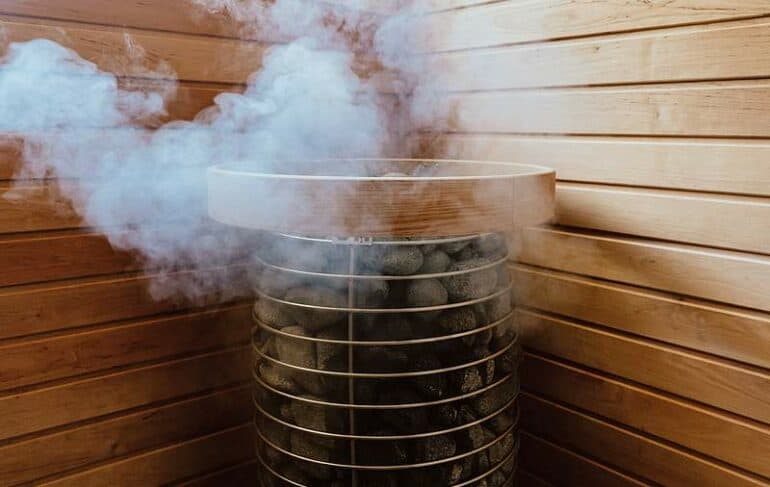What effect does the sauna have on our respiratory system?
The air temperature in a hot sauna cabin can range from 70 to 90 degrees, depending on where you sit down and which sauna bench you choose. It’s understandable that some newcomers worry about whether this heat could damage their respiratory tract – after all, some sauna novices describe their first experience in a Finnish sauna as feeling as if a red-hot stake were being shoved down their windpipe. However, if the humidity is not too high, there is no need to worry; our bodies are surprisingly capable of adapting to these conditions.
What happens to the hot sauna air in our body?
The human respiratory system begins with the nose and continues to the throat, which then opens into the trachea. This is divided into two halves that lead directly to each lung; these are called the main bronchi. Like a tree, they divide further down into smaller branches called bronchioles until they finally open into air-filled vesicles called alveoli – similar to the leaves of a tree. It is in this thin-walled area of the alveoli that the exchange of respiratory oxygen for the carbon dioxide present in the blood takes place – an essential process required for life itself!
The body must now adapt to the inhaled air, whether it is cold or warm. The mucous membranes of the respiratory tract are equipped with many glands and blood vessels that help in this process. When inhaled, these glandular secretions humidify the air while simultaneously warming or cooling it to match the person’s internal temperature. The same phenomenon occurs when someone participates in activities such as sauna bathing; here, the mucous membranes receive seven times more blood flow than at normal temperatures, which allows for better heat transfer to the internal parts of the body, which can cause a slight hyperthermia (overheating) of 0.5-1°C due to the increased activity of the skin organs in all areas of the body.
Scientific studies
Studies have shown that during a sauna visit, mucus secretion from the nasal cavity is increased, regardless of whether one breathes through the nose or the mouth. This disproves the common misconception that breathing hot air dries out the respiratory tract. Our bodies are incredibly adaptable and can handle both extreme heat and low temperatures without harming our health.
The results of a recent experiment suggest that thermal stimuli to the mucous membranes can actually help boost defenses against upper respiratory infections. The scientists found that increased mucus secretion correlated with an increase in (immunoglobin A), which may explain why sauna users are more resistant than others to this type of illness. In addition, experts believe that this is due to the fact that the blood vessels in the same membranes become stronger due to the changing temperature effects and are better able to adapt over time.
Other positive properties of sauna bathing on our health:
- Improves cardiovascular health
- Reduces stress and anxiety
- Relieves muscle tension, aches and pains
- Strengthens the function of the immune system
- Increases blood circulation in the body
- Improves the complexion of the skin
- Helps improve sleep quality
Conclusion
The hot sauna air helps to relax muscles, stimulate circulation, and lower stress levels – so saunas are a great way to promote overall health and well-being.

